Solar Desalination
Author: Prof. Moustafa Elsayed
Usually dispatched in 2 to 3 days
Usually dispatched in 2 to 3 days
Categories:
Energy, Water Desalination & RO
Only logged in customers who have purchased this product may leave a review.
Related products
An Introduction To Membrane Techniques For Water Desalination
This course is adapted from the Unified Facilities Criteria of the United States government, which is in the
public domain, is authorized for unlimited distribution, and is not copyrighted.
An Introduction To Membrane Techniques For Water Desalination
This course is adapted from the Unified Facilities Criteria of the United States government, which is in the
public domain, is authorized for unlimited distribution, and is not copyrighted.
Cleaning Your RO
Eventually the day comes when your RO system will require cleaning. Cleaning is recommended when your RO shows evidence of fouling, just prior to a long term shutdown, or as a matter of scheduled routine maintenance. Fouling characteristics that signal you need to clean are a 10-15% decrease in normalized permeate flow, a 10-15% decrease in normalized permeate quality, or a 10-15% increase in normalized pressure drop as measured between the feed and concentrate headers
Cleaning Your RO
Eventually the day comes when your RO system will require cleaning. Cleaning is recommended when your RO shows evidence of fouling, just prior to a long term shutdown, or as a matter of scheduled routine maintenance. Fouling characteristics that signal you need to clean are a 10-15% decrease in normalized permeate flow, a 10-15% decrease in normalized permeate quality, or a 10-15% increase in normalized pressure drop as measured between the feed and concentrate headers
Desalination Plant Basis Of Design
Overview:
The project potable water requirements will be provided using single desalination plant with the Grand Bahama Port Authority water supply serving as the backup source. The overall desalination treatment process will consist of feedwater pumping, bag filtration, optional media filtration, the addition of a scale
inhibitor, cartridge filtration, membrane separation, forced air degasification, re-pumping, and post treatment. Provisions have been included to bypass the post treatment systems for the production of irrigation water. The post aeration re-pump station will be designed to transfer either type of water to the
appropriate storage tanks located within the project. Membrane concentrate will be disposed via an injection well to be constructed as part of this project.
The desalination process will consist of a dual treatment units or “trains” each equipped with a positive displacement axial piston first pass membrane feed pump, first pass membrane array, energy recovery system, second pass membrane feed pump, second pass membrane array, high- and low-pressure
piping and instrumentation. The second pass system is designed to treat up to 60 percent of the first pass permeate. A membrane cleaning/flush system will be provided. The membrane post treatment will be designed to receive the flow from both units and consists of a forced air degasified, repumping, recarbonation, calcium carbonate up flow contactors to boost finished water hardness and alkalinity concentrations; and three chemical feed systems for the metering of a corrosion inhibitor, dilute hydrochloric acid for pH adjustment and sodium hypochlorite for residual disinfection. The final pH and chlorine residual will be controlled and recorded by a separate system. The following sections describe the various aspects of the facility in greater detail. Process flow
schematics are presented in Appendix A.
Desalination Plant Basis Of Design
Overview:
The project potable water requirements will be provided using single desalination plant with the Grand Bahama Port Authority water supply serving as the backup source. The overall desalination treatment process will consist of feedwater pumping, bag filtration, optional media filtration, the addition of a scale
inhibitor, cartridge filtration, membrane separation, forced air degasification, re-pumping, and post treatment. Provisions have been included to bypass the post treatment systems for the production of irrigation water. The post aeration re-pump station will be designed to transfer either type of water to the
appropriate storage tanks located within the project. Membrane concentrate will be disposed via an injection well to be constructed as part of this project.
The desalination process will consist of a dual treatment units or “trains” each equipped with a positive displacement axial piston first pass membrane feed pump, first pass membrane array, energy recovery system, second pass membrane feed pump, second pass membrane array, high- and low-pressure
piping and instrumentation. The second pass system is designed to treat up to 60 percent of the first pass permeate. A membrane cleaning/flush system will be provided. The membrane post treatment will be designed to receive the flow from both units and consists of a forced air degasified, repumping, recarbonation, calcium carbonate up flow contactors to boost finished water hardness and alkalinity concentrations; and three chemical feed systems for the metering of a corrosion inhibitor, dilute hydrochloric acid for pH adjustment and sodium hypochlorite for residual disinfection. The final pH and chlorine residual will be controlled and recorded by a separate system. The following sections describe the various aspects of the facility in greater detail. Process flow
schematics are presented in Appendix A.
A Primer On Brackish And Seawater Desalination
Abstract: This publication was produced as an activity of the Texas Living Waters Project. This project
is a collaborative effort of the National Wildlife Federation, Environmental Defense, and the Lone
Star Chapter of the Sierra Club. The goals of the project are to 1) ensure adequate water for people
and environmental needs, 2) reduce future demand for water and foster efficient and sustainable use
of current water supplies, 3) educate the public and decision makers about the impact of wasteful
water use and the opportunities for water conservation, and 4) involve citizens in the decision
making process for water management.
A Primer On Brackish And Seawater Desalination
Abstract: This publication was produced as an activity of the Texas Living Waters Project. This project
is a collaborative effort of the National Wildlife Federation, Environmental Defense, and the Lone
Star Chapter of the Sierra Club. The goals of the project are to 1) ensure adequate water for people
and environmental needs, 2) reduce future demand for water and foster efficient and sustainable use
of current water supplies, 3) educate the public and decision makers about the impact of wasteful
water use and the opportunities for water conservation, and 4) involve citizens in the decision
making process for water management.
Database Of Permitting Practices For Seawater Desalination Concentrate
Abstract:
The purpose of this research project was to identify the discharge information that permitting agencies need and the decision-making process they go through to permit discharge methods in order to help desalination project proponents focus and expedite their permitting efforts.
The project documented seawater reverse osmosis (SWRO) discharge regulatory issues and provided a critical overview of facility discharge-related information required for permitting desalination projects in the United States and selected countries with advanced environmental regulations and experience in implementing seawater desalination projects. Information was gathered from the three key U.S. states (California, Florida, Texas) where interest in SWRO desalination has been highest. Due to the more extensive international experience with SWRO desalination, information was also obtained from the countries of Australia, Israel, and Spain – all countries of significant recent large-scale SWRO desalination projects. Case studies of 11 SWRO plants and analysis of regulatory systems and permitting processes supported detailed definition of the decision-making process to set discharge permit limits, as well as defining environmental and other regulatory issues associated with concentrate regulation.
Database Of Permitting Practices For Seawater Desalination Concentrate
Abstract:
The purpose of this research project was to identify the discharge information that permitting agencies need and the decision-making process they go through to permit discharge methods in order to help desalination project proponents focus and expedite their permitting efforts.
The project documented seawater reverse osmosis (SWRO) discharge regulatory issues and provided a critical overview of facility discharge-related information required for permitting desalination projects in the United States and selected countries with advanced environmental regulations and experience in implementing seawater desalination projects. Information was gathered from the three key U.S. states (California, Florida, Texas) where interest in SWRO desalination has been highest. Due to the more extensive international experience with SWRO desalination, information was also obtained from the countries of Australia, Israel, and Spain – all countries of significant recent large-scale SWRO desalination projects. Case studies of 11 SWRO plants and analysis of regulatory systems and permitting processes supported detailed definition of the decision-making process to set discharge permit limits, as well as defining environmental and other regulatory issues associated with concentrate regulation.
Concentrating Solar Power For Seawater Desalination
Introduction:
The general perception of “solar desalination” today comprises only small scale technologies for decentralized water supply in remote places, which may be quite important for the development of rural areas, but do not address the increasing water deficits of the quickly growing urban centers of demand. Conventional large scale desalination is perceived as expensive, energy consuming and limited to rich countries like those of the Arabian Gulf, especially in view of the quickly escalating cost of fossil fuels like oil, natural gas and coal. The environmental impacts of large scale desalination due to airborne emissions of pollutants from energy consumption and to the discharge of brine and chemical additives to the sea are increasingly considered as critical. For those reasons, most contemporary strategies against a “Global Water Crisis” consider seawater desalination only as a marginal element of supply. The focus of most recommendations lies on more efficient use of water, better accountability, re-use of waste water, enhanced distribution and advanced irrigation systems. To this adds the recommendation to reduce agriculture and rather import food from other places. On the other hand, most sources that do recommend seawater desalination as part of a solution to the water crisis usually propose nuclear fission and fusion as indispensable option.
Concentrating Solar Power For Seawater Desalination
Introduction:
The general perception of “solar desalination” today comprises only small scale technologies for decentralized water supply in remote places, which may be quite important for the development of rural areas, but do not address the increasing water deficits of the quickly growing urban centers of demand. Conventional large scale desalination is perceived as expensive, energy consuming and limited to rich countries like those of the Arabian Gulf, especially in view of the quickly escalating cost of fossil fuels like oil, natural gas and coal. The environmental impacts of large scale desalination due to airborne emissions of pollutants from energy consumption and to the discharge of brine and chemical additives to the sea are increasingly considered as critical. For those reasons, most contemporary strategies against a “Global Water Crisis” consider seawater desalination only as a marginal element of supply. The focus of most recommendations lies on more efficient use of water, better accountability, re-use of waste water, enhanced distribution and advanced irrigation systems. To this adds the recommendation to reduce agriculture and rather import food from other places. On the other hand, most sources that do recommend seawater desalination as part of a solution to the water crisis usually propose nuclear fission and fusion as indispensable option.
Desalination as an Alternative to Alleviate Water Scarcity and a Climate Change Adaptation Option in the MENA Region
This report has been prepared by Dr. Jauad El Kharraz at MEDRC with the support of Eng. Ayisha Al-Hinaai, Eng. Riadh Dridi, Ms. Elsa Andrews, Ms. Jackie Allison, and Eng. Georges Geha. This study was peer reviewed by three international experts. We would like to thank them for their reviewing work
Desalination as an Alternative to Alleviate Water Scarcity and a Climate Change Adaptation Option in the MENA Region
This report has been prepared by Dr. Jauad El Kharraz at MEDRC with the support of Eng. Ayisha Al-Hinaai, Eng. Riadh Dridi, Ms. Elsa Andrews, Ms. Jackie Allison, and Eng. Georges Geha. This study was peer reviewed by three international experts. We would like to thank them for their reviewing work
Desalination & Water Purification Technologies
Introduction:
The world’s water consumption rate is doubling every 20 years, outpacing by two times the rate of population growth. The availability of good quality water is on the decline and water demand is on the rise. Worldwide availability of fresh water for industrial needs and human consumption is limited.
Various industrial and developmental activities in recent times have resulted in increasing the pollution level and deteriorating the water quality. Water shortages and unreliable water quality are considered major obstacles to achieve sustainable development and improvement in the quality of life. The water
demand in the country is increasing fast due to progressive increase in the demand of water for irrigation, rapid industrialization, and population growth and improving life standards. The existing water resources are diminishing (i) due to unequal distribution of rain water and occasional drought, (ii) excessive exploitation of ground water sources and its insufficient recharge, (iii) deterioration of water quality due to the discharge of domestic and industrial effluents without adequate treatment. This is resulting into water stress/ scarcity. Country is currently passing through social and economic transition.
The proportion of the population which is urban has doubled over the last thirty years (and is now about 30%), agriculture now accounts for about 25% of GDP and the economy has been growing at around 7-9% a year. Country has a highly seasonal pattern of rainfall, with 50% of precipitation falling
in just 15 days and over 90% of river flows in just four months
Desalination & Water Purification Technologies
Introduction:
The world’s water consumption rate is doubling every 20 years, outpacing by two times the rate of population growth. The availability of good quality water is on the decline and water demand is on the rise. Worldwide availability of fresh water for industrial needs and human consumption is limited.
Various industrial and developmental activities in recent times have resulted in increasing the pollution level and deteriorating the water quality. Water shortages and unreliable water quality are considered major obstacles to achieve sustainable development and improvement in the quality of life. The water
demand in the country is increasing fast due to progressive increase in the demand of water for irrigation, rapid industrialization, and population growth and improving life standards. The existing water resources are diminishing (i) due to unequal distribution of rain water and occasional drought, (ii) excessive exploitation of ground water sources and its insufficient recharge, (iii) deterioration of water quality due to the discharge of domestic and industrial effluents without adequate treatment. This is resulting into water stress/ scarcity. Country is currently passing through social and economic transition.
The proportion of the population which is urban has doubled over the last thirty years (and is now about 30%), agriculture now accounts for about 25% of GDP and the economy has been growing at around 7-9% a year. Country has a highly seasonal pattern of rainfall, with 50% of precipitation falling
in just 15 days and over 90% of river flows in just four months
Assessment Of Best Available Technologies For Desalination In Rural/Local Areas
Introduction: The Sustainable Water Integrated Management (SWIM) is a European Union(EU)-funded Regional Technical
Assistance Program [1] that “aims at supporting water governance and mainstreaming by promoting sustainable
and equitable water resources management to become a prominent feature of national development policies and
strategies (agriculture, industry, tourism, etc).” [2]
Countries in the south of the Mediterranean are facing increasing water scarcity. This scarcity is driving the need
for augmenting conventional water supply with alternative water sources. Rural and remote areas are particularly
disadvantaged because such areas are often located far away from municipal water supply systems and
conventional water sources, and are often not connected to the electric power grid. There is good potential for
addressing the water scarcity problem in rural and remote areas through sustainable saline water desalination
technologies. Seawater and brackish water desalination are well-established industries comprising a wide variety
of available technologies with decades of accumulated experience. There are many advancements and evolution in
desalination technologies. The numerous technologies and processes available have different characteristics,
advantages and disadvantages that make each suitable for particular market segments or specific niches.
Moreover, much of the cumulative technology experience is related to large urban supply plants that are either
connected to the grid, or are themselves part of large power and desalination cogeneration plants. Rural and
remote areas have special requirements that influence the appropriate selection of technologies. These include
technical requirements related to small-scale application using renewable energy sources, ease of operation and
maintenance, and simple design; requirements dictated by geographical location; as well as socio-economic and
socio-cultural requirements related to the communities that are intended to operate and benefit from the
technology. Successful implementation and long term sustainability (operational and environmental sustainability)
of desalination projects for rural and remote locations requires that all the relevant requirements be identified and
addressed from the earliest stages of the project.
Assessment Of Best Available Technologies For Desalination In Rural/Local Areas
Introduction: The Sustainable Water Integrated Management (SWIM) is a European Union(EU)-funded Regional Technical
Assistance Program [1] that “aims at supporting water governance and mainstreaming by promoting sustainable
and equitable water resources management to become a prominent feature of national development policies and
strategies (agriculture, industry, tourism, etc).” [2]
Countries in the south of the Mediterranean are facing increasing water scarcity. This scarcity is driving the need
for augmenting conventional water supply with alternative water sources. Rural and remote areas are particularly
disadvantaged because such areas are often located far away from municipal water supply systems and
conventional water sources, and are often not connected to the electric power grid. There is good potential for
addressing the water scarcity problem in rural and remote areas through sustainable saline water desalination
technologies. Seawater and brackish water desalination are well-established industries comprising a wide variety
of available technologies with decades of accumulated experience. There are many advancements and evolution in
desalination technologies. The numerous technologies and processes available have different characteristics,
advantages and disadvantages that make each suitable for particular market segments or specific niches.
Moreover, much of the cumulative technology experience is related to large urban supply plants that are either
connected to the grid, or are themselves part of large power and desalination cogeneration plants. Rural and
remote areas have special requirements that influence the appropriate selection of technologies. These include
technical requirements related to small-scale application using renewable energy sources, ease of operation and
maintenance, and simple design; requirements dictated by geographical location; as well as socio-economic and
socio-cultural requirements related to the communities that are intended to operate and benefit from the
technology. Successful implementation and long term sustainability (operational and environmental sustainability)
of desalination projects for rural and remote locations requires that all the relevant requirements be identified and
addressed from the earliest stages of the project.



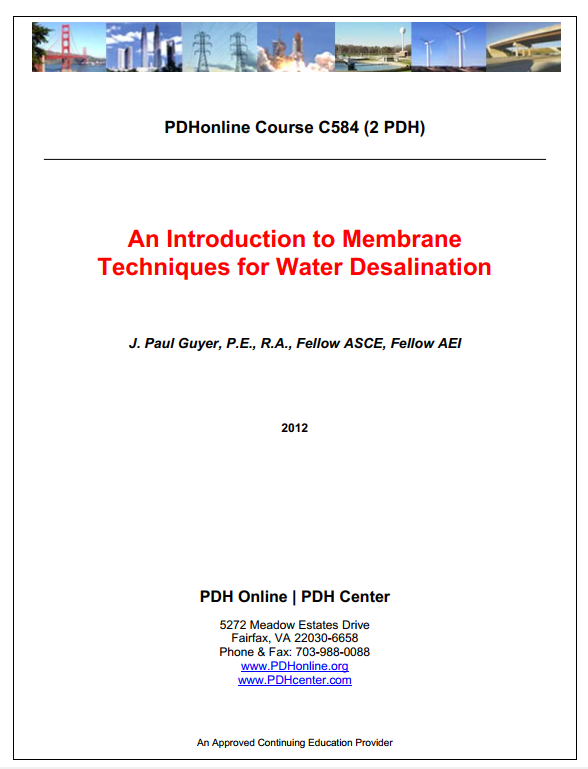




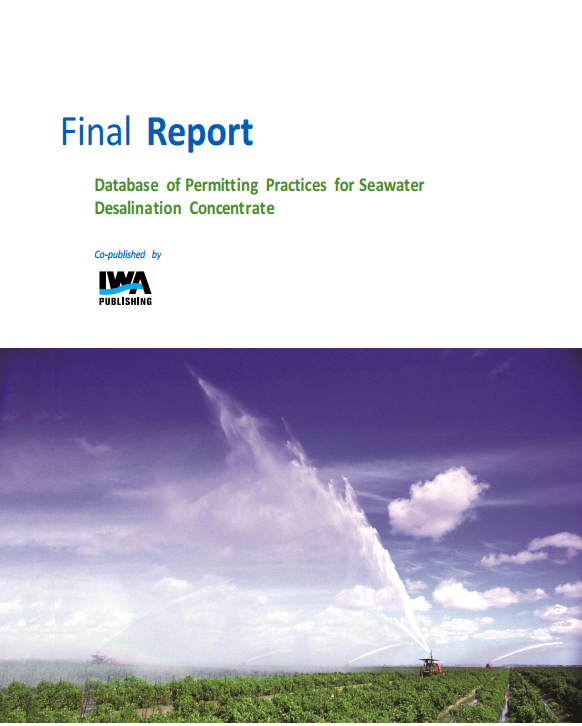


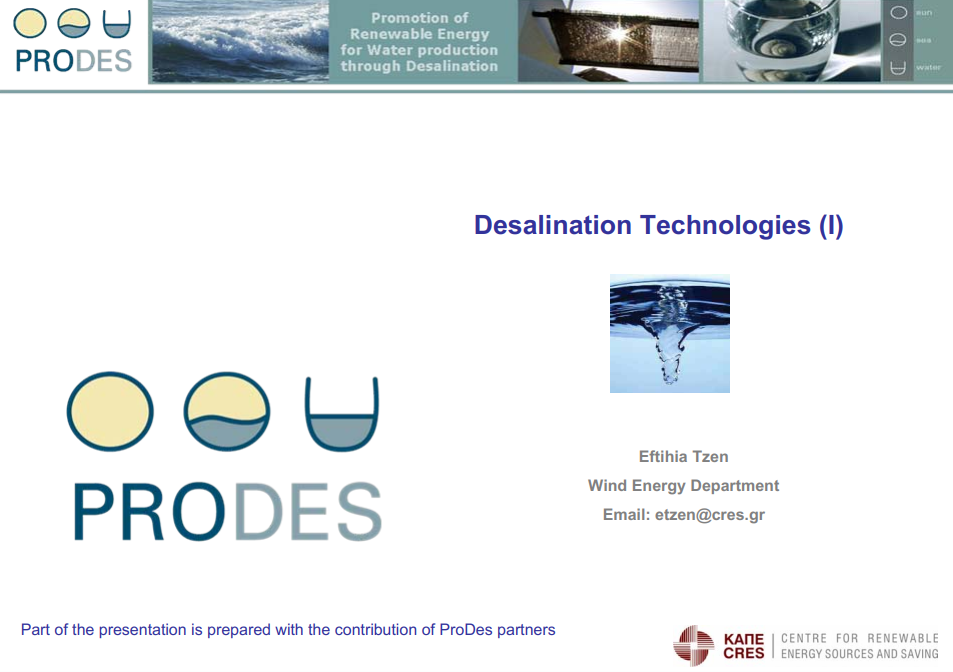
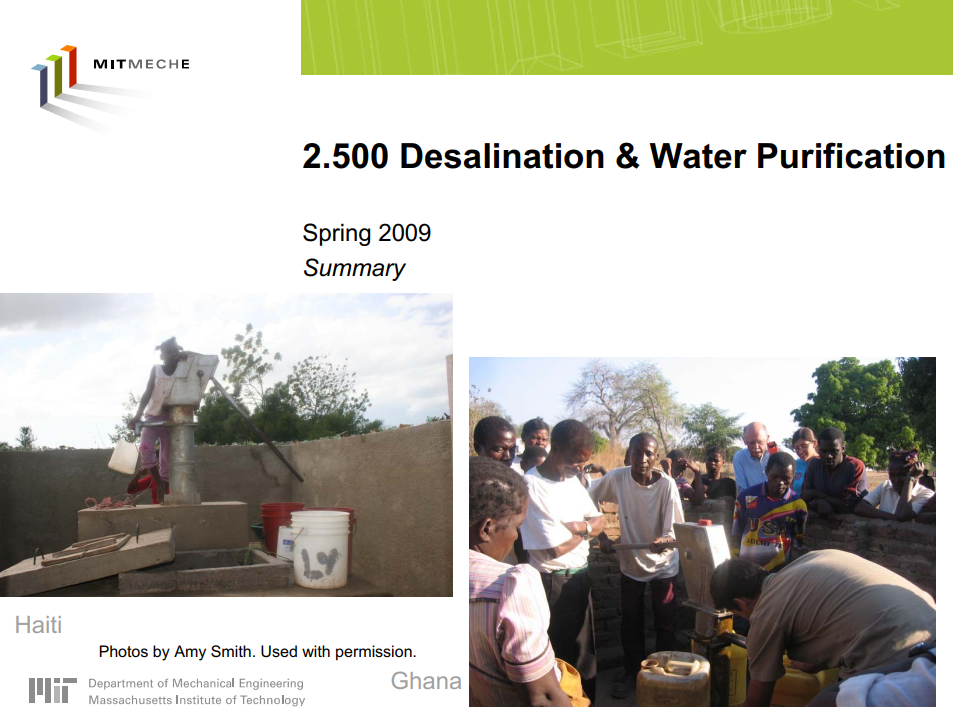
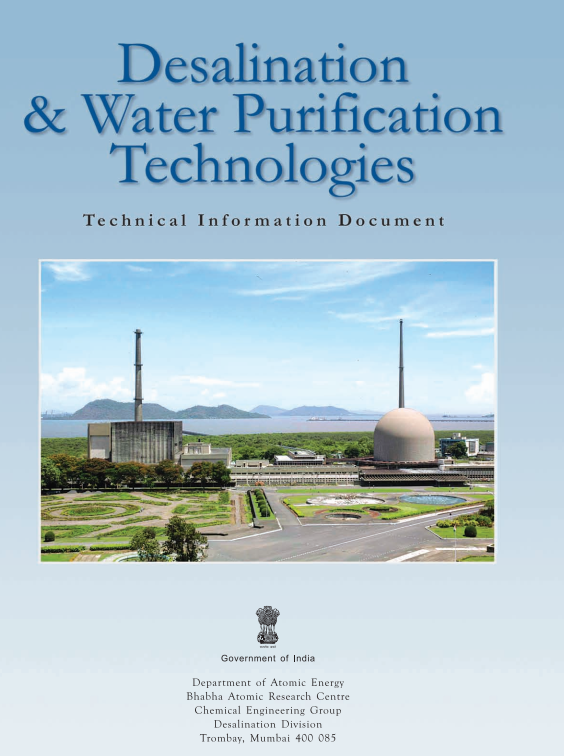

Reviews
There are no reviews yet.